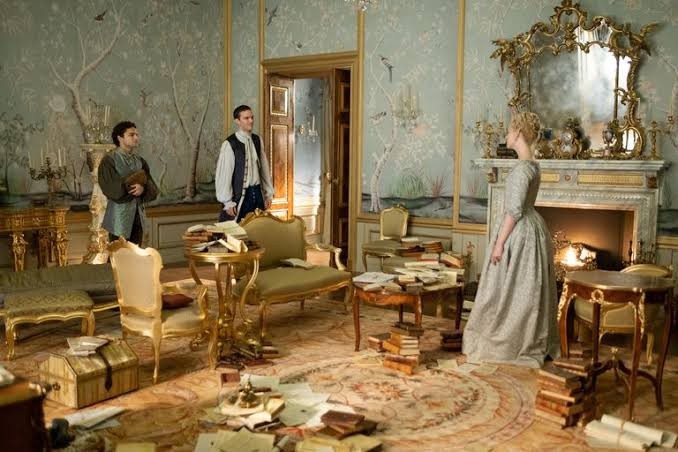Catherine the Great Furniture – The Timeless Elegance of a Royal Legacy
Catherine the Great, one of the most powerful and admired rulers in history, was known for her sophisticated taste and passion for art and culture. Her reign from 1762 to 1796 not only transformed Russia politically but also left an indelible mark on its art, architecture, and design. When we talk about “Catherine the Great furniture,” we are referring to a style that was emblematic of her grandeur and her role in influencing the arts of her time.
In this article, we will delve deep into the world of Catherine the great furniture its origins, its designs, and how it continues to inspire modern interior trends. We will also answer some frequently asked questions about this timeless style and explore how it blends royal elegance with functionality.
The Legacy of Catherine the Great and Her Influence on Furniture Design
Catherine the Great, born in Stettin (now Szczecin, Poland) in 1729, was a German princess who became the Empress of Russia. During her reign, she was an avid patron of the arts and played a key role in promoting the cultural development of Russia. Catherine surrounded herself with luxurious objects, paintings, and of course, exquisite furniture. Her taste was inspired by French Rococo and Neoclassical styles, but she made sure that the furniture in her palaces was distinctly Russian, blending Western styles with Russian elements.
Catherine’s furniture was not just about opulence; it also symbolized her position as a powerful ruler and her desire to align Russia with the cultural sophistication of Western Europe. She commissioned furniture designs that were as functional as they were artistic, with a focus on creating spaces that reflected her authority and taste.
Key Characteristics of Catherine the Great Furniture
1. Luxurious Materials and Craftsmanship
Catherine’s furniture was made from the finest materials available at the time. Ornate woods such as walnut, mahogany, and rosewood were often used, and many pieces were decorated with intricate carvings and gilded accents. Gold leaf, bronze, and porcelain inlays were common features, and pieces were often adorned with rich fabrics like velvet and silk.
The craftsmanship of the furniture was exceptional, with pieces made by the most skilled artisans in Russia and Europe. The furniture was not just functional but also served as a symbol of wealth and refinement.
2. French Rococo Influence
Catherine the Great was greatly influenced by the French Rococo style, which was characterized by its playful and elaborate designs. The Rococo style emphasized curves, floral motifs, and delicate ornamentation. Catherine brought these elements into Russian furniture design, blending them with traditional Russian styles to create a unique look that reflected both Western elegance and Russian grandeur.
For example, chairs and tables from Catherine’s court often featured intricate carvings of flowers and leaves, with flowing, curving shapes that embodied the Rococo love for lightness and movement.
3. Neoclassical Elegance
As Catherine’s reign progressed, she became increasingly drawn to Neoclassicism—a style that was inspired by the art and architecture of ancient Greece and Rome. This influence is evident in many pieces of furniture from her court, such as chairs with straight lines, geometric shapes, and classical motifs like laurel wreaths, urns, and columns. The Neoclassical style provided a sense of order and symmetry that complemented the grandeur of the Russian court.
4. Symmetry and Balance
Catherine the Great’s furniture emphasized symmetry, reflecting the Neoclassical ideals of order and balance. Whether it was a grand mirror, a lavish cabinet, or an ornate sofa, the pieces were designed to create a sense of harmony within a room. This approach to furniture design was a stark contrast to the more whimsical and asymmetrical Rococo style, but it appealed to Catherine’s desire for stability and elegance.
5. Functional Beauty
Though the furniture in Catherine’s palaces was undeniably extravagant, it also served a practical purpose. Tables, chairs, and desks were not only beautiful but designed to be comfortable and useful. For example, Catherine’s famous writing desks were designed to help her manage her vast empire while maintaining a sense of dignity and elegance. The balance between form and function in Catherine’s furniture remains one of its most notable features.
Popular Pieces of Catherine the Great Furniture
1. The Catherine Palace Furniture
The Catherine Palace, located in Tsarskoye Selo near St. Petersburg, is one of the most iconic symbols of Catherine the Great’s reign. The furniture in the palace is a perfect example of the opulent style she favored. The palace’s rooms, including the famous Amber Room, were filled with luxurious furnishings that combined Rococo and Neoclassical influences. Ornate gilded chairs, delicate tables, and large mirrors adorned the rooms, creating an atmosphere of grandeur and sophistication.
2. The Imperial Bedchamber Furniture
Catherine the Great’s bedchamber was another example of her lavish taste in furniture. The bed, for instance, was not just a place for rest but an expression of power and luxury. The bedframe was often made of gilded wood, with elaborate carvings of mythological figures and floral motifs. The fabrics were rich and luxurious, often featuring intricate patterns and embroidery.
3. Catherine’s Writing Desk
Catherine was an extremely active ruler, and much of her work was done at her writing desk. Her desks were often designed to be both functional and aesthetically pleasing, made from fine wood and decorated with gilded details. They served as a testament to her intellect and her commitment to governing Russia with both grace and precision.
How Catherine the Great Furniture Influences Modern Design
While Catherine the Great’s furniture may seem like a thing of the past, its influence continues to reverberate in modern interior design. The blend of luxurious materials, symmetrical designs, and elegant motifs continues to inspire contemporary furniture makers and interior designers.
1. Neoclassical Influence in Modern Interiors
The Neoclassical elements in Catherine’s furniture—such as columns, urns, and symmetrical shapes—are still widely used in modern furniture design. Many high-end furniture brands and designers have incorporated these classical elements into their pieces to create a sense of timeless elegance.
2. Gilded Accents and Luxurious Materials
The use of gold leaf, inlaid wood, and velvet fabric in Catherine’s furniture is making a comeback in modern interior design. Designers often use gilded finishes on furniture legs, mirrors, and frames to add a touch of opulence to contemporary spaces. Rich fabrics like velvet and silk are also being used more frequently in modern upholstery, taking inspiration from Catherine’s luxurious style.
3. Functionality Meets Luxury
Modern interior design often seeks to combine beauty with functionality, much like Catherine’s furniture. Today’s designers focus on creating pieces that are not only beautiful but also practical for everyday use. Whether it’s a sofa with a classic design or a functional writing desk, contemporary furniture makers have learned from Catherine the Great’s ability to blend elegance with usability.
FAQs Catherine the Great Furniture
1. What is Catherine the Great’s furniture style?
Catherine the Great’s furniture style is a fusion of Rococo and Neoclassical influences. It features ornate carvings, gilded details, and luxurious materials like velvet, silk, and fine wood. Her furniture design also emphasized symmetry, balance, and functionality, with a focus on both beauty and practicality.
2. Where can I find furniture inspired by Catherine the Great?
Furniture inspired by Catherine the Great can be found at high-end antique stores, specialty furniture galleries, and museums that specialize in Russian art and design. Additionally, many modern furniture designers incorporate elements of her style into their work, and you can find contemporary pieces with a Catherine the Great influence online or in upscale furniture stores.
3. What materials were used in Catherine the Great’s furniture?
Catherine the Great’s furniture was made from luxurious materials such as mahogany, walnut, rosewood, and gilded wood. It also featured fine fabrics like velvet and silk, along with gold leaf, bronze, and porcelain inlays.
4. How does Catherine the Great’s furniture reflect her personality?
Catherine’s furniture reflects her intellect, power, and taste for luxury. The blend of elegance, symmetry, and functionality in her furniture design showcases her desire to elevate Russia culturally and politically. Her furniture was not only beautiful but also served as a symbol of her reign and her role as a sophisticated and powerful ruler.
5. Why is Catherine the Great’s furniture still relevant today?
Catherine the Great’s furniture continues to inspire modern design because of its timeless elegance. The combination of luxurious materials, intricate details, and functional beauty remains relevant in today’s design world. Contemporary designers draw upon the classical elements of Catherine’s furniture to create pieces that are both functional and luxurious.
Conclusion
Catherine the Great’s furniture is a perfect representation of her reign—opulent, refined, and full of artistic value. Her legacy in the world of furniture design continues to inspire interior designers and collectors alike, blending Western influences with Russian traditions to create pieces that transcend time. Whether you are looking to decorate your home in a regal style or simply admire the elegance of historical design, Catherine the Great’s furniture offers a lasting reminder of her extraordinary influence on the world of art and design.
From her palatial furniture to modern interpretations, Catherine’s furniture offers a glimpse into the magnificence of her empire and the timeless appeal of her refined tastes.






